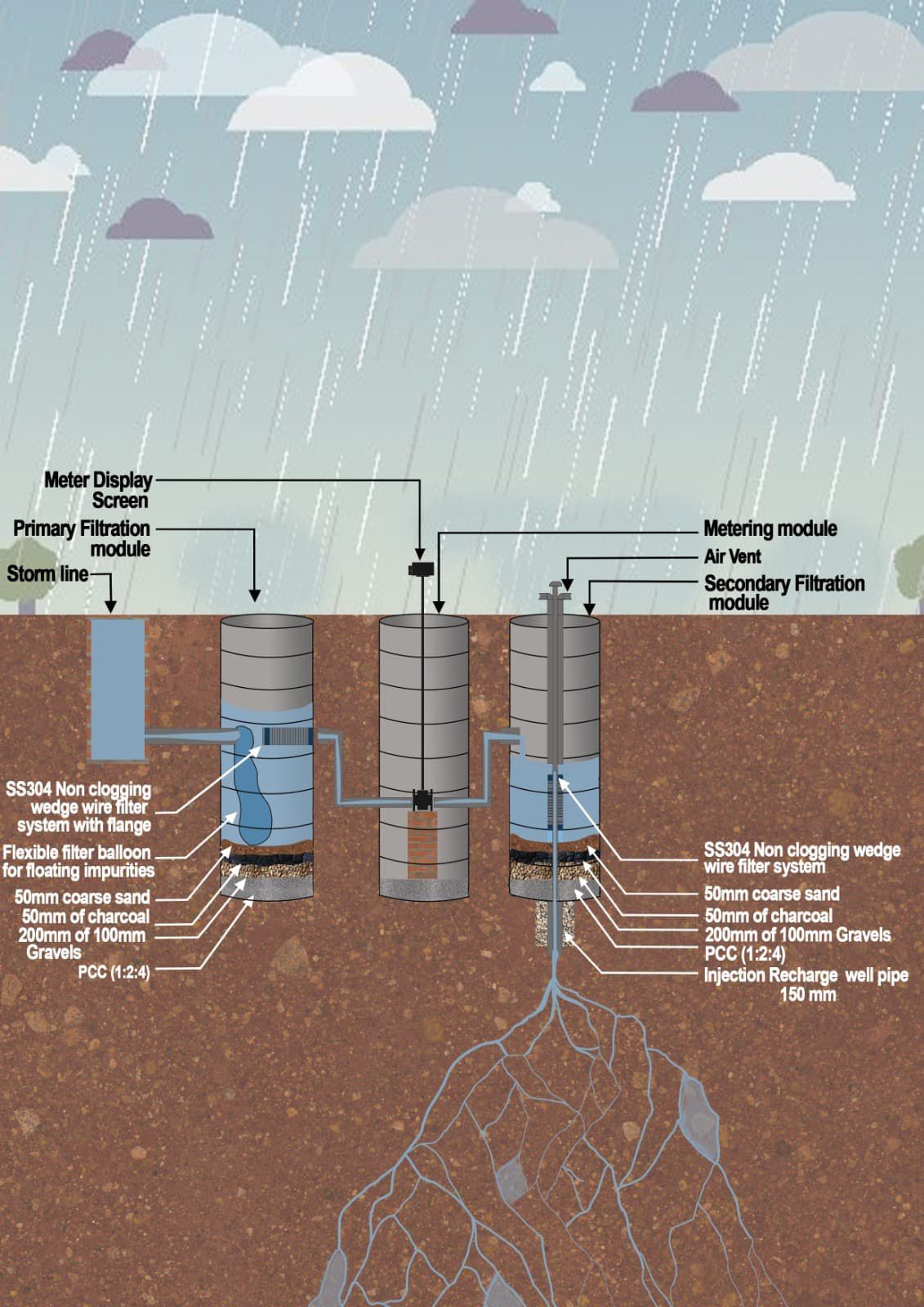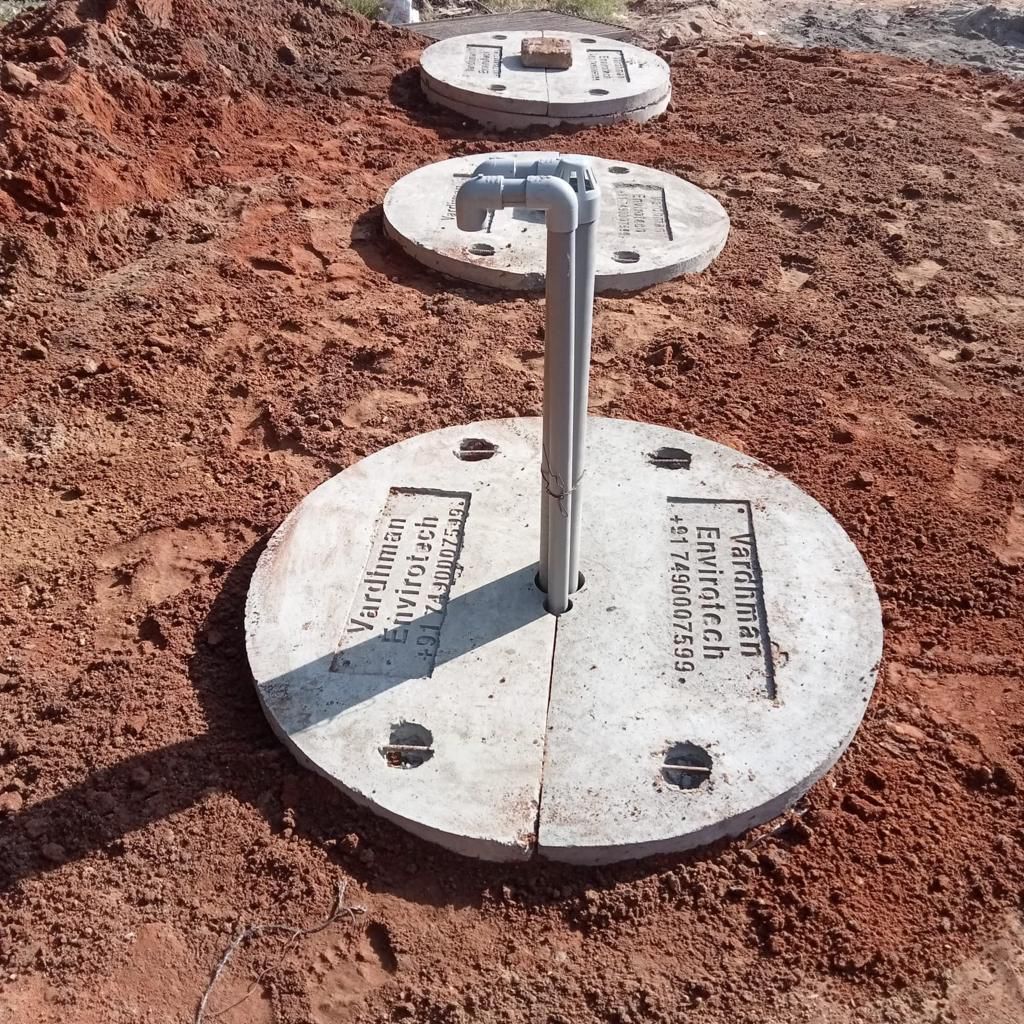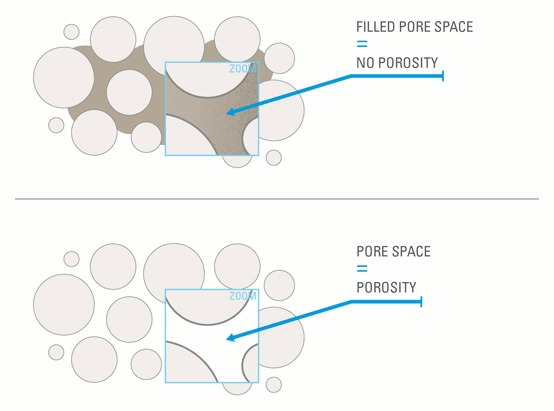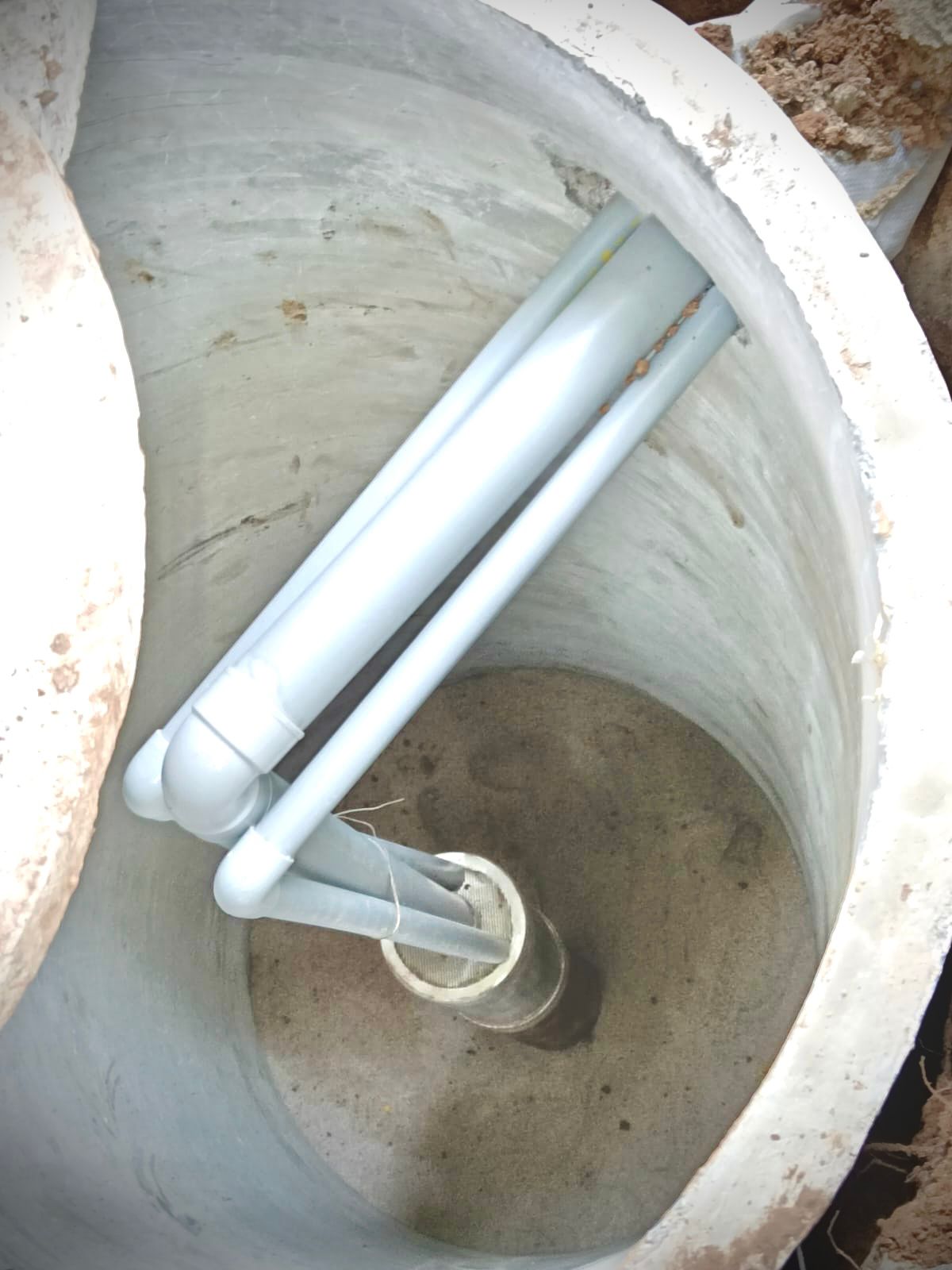Water withdrawn from the subsurface (underground) has its source primarily from rain that infiltrates the land surface and slowly percolates to the water table. This process of percolation of rain water in to the underground storage (Aquifer) is called natural ground water recharge or simply “Recharge”. The quantity of this natural recharge varies with grain size of sand, slope and intensity of rainfall. If the sand is coarse grained, slope is gentle and intensity of rainfall is slow then there will be more natural recharge and in reverse condition this will be slow. Ever increasing demand of water for various uses results in withdrawal of Groundwater which depletes water table of the area. Hydrographs (Graphs of water level fluctuation verses time) taken on long term basis depicts the decline or rise in water level. If substantial water level declines, then manmade efforts are required to maintain the level. Any effort for augmenting the water-level is called artificial recharge. Long term water-level decline indicates diminishing amounts of water in aquifer. This leads to several problems like reduction in well yields, intrusion of saline water in coastal areas, water quality problems, etc. This leads to shortfall in water availability. Proper understanding of hydrologic cycle, seepage of rain water to underground, water holding capability of the formation, confining and un-confining conditions of the subsurface, porosity and permeability of the formation etc. is the basis of understanding recharge.

Ground water:
Rain water goes down to the underground through capillaries and forms ground water. When it reaches underground it requires some space (voids/strata) for the adjustment. These voids are provided by “Aquifers”. Some forms good aquifers where as others are poor. The most important requirement is that the stratum must have interconnected opening or pores through which water can move. 1. Aquifer- Geological formation which can receive, hold and transmit the water is known as aquifer. Sand gravel form good potential aquifers. 2. Aquiclude-Geological formation which receive and holds the water but is not capable of transmitting it, is known as Aquiclude (Clay, Shale are the examples of Aquiclude) 3. Aquifuse- Formations that neither receive, nor hold or transmit water are called Aquifuse. Compact Granite, quartzite, basalt etc. are the examples of Aquifuse. As discussed above rain water that percolates to the subsurface needs some space to form an underground storage. These spaces are known as voids, interstices or pore spaces. Interstices (pores) act as ground water conduits and are characterized by their size, shape, distribution, etc. These are created by geologic processes governing the origin of the geologic formation and are found in sedimentary and igneous rocks. However, if the pore spaces are not interconnected, then they may not facilitate the movement of groundwater. Available pore space in the formation is termed as porosity of the formation and the degree of interconnectivity of these pores is termed as permeability of the formation.

Porosity and Permeability:
The term porosity of a formation can thus be defined as the measure of the available interstices in the formation. It is expressed as the percentage (%) of void space to the total volume of the mass. These pores may be interconnected (like sandstone) or may not be connected at all (like sticky Clay). 1-10 Permeability of a porous formation refers to the ease with which a fluid will pass through it or in other words is the degree of interconnectivity of the pore spaces. In aquifer the quantity of stored water and the level of transmission depend on their porosity and permeability. Fair degree of interconnectivity of pores in formations like sandstone means it is both porous and permeable, which means that they can both hold and yield water. Formations like sticky Clay is porous but not permeable, as it can hold water but cannot transmit it. If the rocks are fractured or weathered, some water may be stored in these fractures and in weathered portions. This is called the secondary porosity of hard rock formation, which is limited to fractures, fissures, joints and other structural ambiguities. Water holding capacity depends on the degree of fractures and its transmission depends on the degree of interconnectivity of these fractures and joints. Unconfined aquifer In case of sedimentary formations, the deposition takes place in strata with variable thickness, material and characteristics. In unconfined aquifers the upper most surface of such depositions is permeable and directly in contact with atmosphere, to facilitate percolation from the precipitation. Water stored in the subsurface in such conditions forms the unconfined aquifers. This is also known as the water table aquifer. A weathered formation of hard rock area also forms good unconfined aquifers. 13 14 Confined Aquifers Confined aquifers has an overlying and under lying confining layer of less permeability than the aquifer and has indirect connection with the atmosphere. Cone of depression Pumping from wells lowers the water table near a well. This is known as the cone of depression. The land surface overlying the cone of depression is also referred to as the area of influence. Groundwater flow is diverted towards the well as it flows into the depression cone. If the ground water storage in an area decreases and discharge (by various means) exceeds the natural recharge, then it can be decided that the area needs artificial recharge which may be achieved through planned system. This can completely change the ground water regimen.
 Photo credit: Resources Victoria
Photo credit: Resources Victoria
Groundwater Recharge:
Recharge is a term broadly used to replenishment of a particular resource and holds good for groundwater as well. Recharge to subsurface takes place when runoff is generated by rainfall and percolates to underground aquifer. This is a natural process, which takes place in accordance with the infiltration capacity of the available formation. Need to enhance recharge Natural Recharge is a slow process directly dependent up on the infiltration capacity of the available formation, rainfall and land use of the area. Ever increasing demand for water has led to exploration of finite water resources with the help of latest scientific and technical innovations. Hydro geological knowledge and latest technology has been used to explore ground water resulting in exploitation of the groundwater reserves. However, Groundwater draft has exceeded the natural recharge rates thereby creating an environmental imbalance. Depletion of invisible ground water is very much visible in the form of dwindling water levels and deteriorating quality and has to be countered at a large scale by applying alternative management and conservation techniques. Rate of natural recharge has to be enhanced by human intervention to counter the imbalance. This human intervention is called Artificial Recharge.

Vardhman Envirotech
India’s Passionate rainwater company
We would like to spread this for the benefit of fellow Indians.
